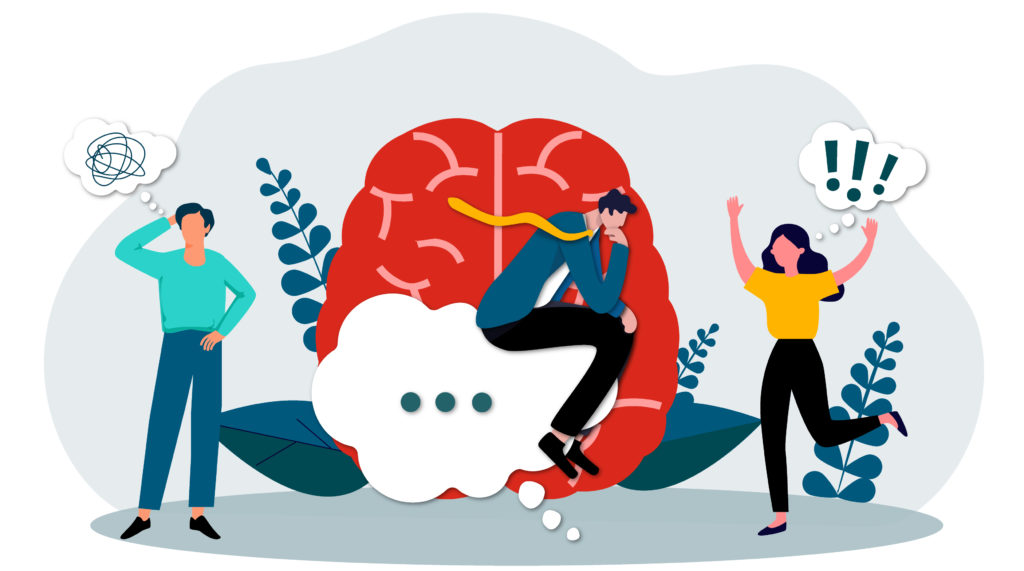We’ve all been in the buyer seat before and gone through the various phases of a sales process. Have you considered the mental or emotional stages that go with the buyer journey?
You’re likely already familiar with the buyer journey which goes from awareness to consideration, and finally to decision, however, there are also different mental and emotional aspects during those each of those stages.
In a crowded market with an increasing number of competitors, it’s important to not lose sight of the buyer journey. But the journey looks a little different now and something that can set a business and salesperson apart is fulfilling the emotional needs at each stage of the buying process. Luckily with today’s technology, there are pieces of intelligence and automation that can help the salesperson capture the buyer’s attention with pertinent information at the right time.
As you check out our three emotions behind the buyer journey laid out below, think of a time you might have been buying something – maybe a major purchase you had to think about, get price comparison or shop around, read reviews, etc. Even if you’re not a B2B buyer, it’s a relatable journey.
1. Skeptic
For the salesperson, this stage is all about educating and helping buyers who usually have a slew of questions:
- How does this particular product or service set themselves apart from their competitors?
- Will really solve the problem?
- Is the problem even really a problem?
- What does return on the investment look like?
- Is there a guarantee that can back up the claims that are made?
Every buyer has a right to be skeptical, especially when they’re not fully sure they have a problem, are investing in a major purchase, or knowing their decision will impact the overall big picture. A buyer in this mindset is looking to gain trust and confidence in the person and company they are going to ultimately purchase from.
More than ever, the salesperson and buyer relationship is a key player in the final decision. Buyers want to feel like they are more than a sale, so for a salesperson to be more helpful as a resource and going above and beyond to answer questions will easily help lead to the next steps in the sales process.
2. Interested
Once a salesperson knocks down that barrier of uncertainty with their buyer, they will be on to the next phase: interested. The buyer might be evaluating other options during this time, so it’s important for the salesperson to stay engaged with their buyer to help them convert. There are a few things that can help sales teams with this process:
- Make sure you fully understand the buyer’s problem and what their needs are. Don’t be afraid to ask questions to clarify the details. Even if it seems repetitious, it’s very important buyers know you’re on the same page as them.
- Tailoring solutions might be an option at this point if it’s something that your company offers. Buyers love to get a special one-of-a-kind item, service, or pricing based on their needs so that it will meet their needs. Again, it demonstrates you’re on the same page and are willing to work with them to get them onboard as a client.
- Be knowledgeable about your competitors. How do you compare? How are you superior? What might “the others” offer that you don’t? It’s best to be honest and up front with the buyer to show that you’re there to help in their decision process, ensuring it’s the right one for them.
Objections at this time are completely normal. As salespeople become more seasoned, they will be able to anticipate and get through this stage with ease.
3. Excited
The final stage and perhaps the easiest to get through. The salesperson and buyer are on the same page. They’ve gone through the tough parts of the sales process and the buyer is now anxious to get started with your service or get your product in-hand. Remember, the “sale” doesn’t end with the signed contract. It’s important for salespeople to continue to delight their clients. A few ways to accomplish this include:
- Send informational emails about the item they purchased to help them remember, see, and realize the value they received. There might be instructions about certain features to highlight too.
- Ask for feedback on the sales process as well as the product or service that was purchased. It will only help to improve upon those things in the future and demonstrates you value their opinion.
- Keep them updated on new services and products that might compliment what they have already purchased or solve some need they may have mentioned during the sales process that you didn’t offer at the time.
Bottom line: The journey continues for salespeople to make the buyer into an ambassador for your brand.
Every stage of the sales process is linked to a different emotion. Buyers are seeking different types of information and overall are looking to be helped and make a connection. It’s important to make sure messaging is aligned with the customer journey both verbally and in digital communications – including post-sale. The sales process is not always a linear journey, but it helps to be aware of the emotional state buyers go through during the process to help convert prospects to clients.
If you’re looking for help navigating through the buyer journey, MPI is a trusted outsourced sales partner that can help drive sales and growth so you can focus on your business. Let’s chat.




